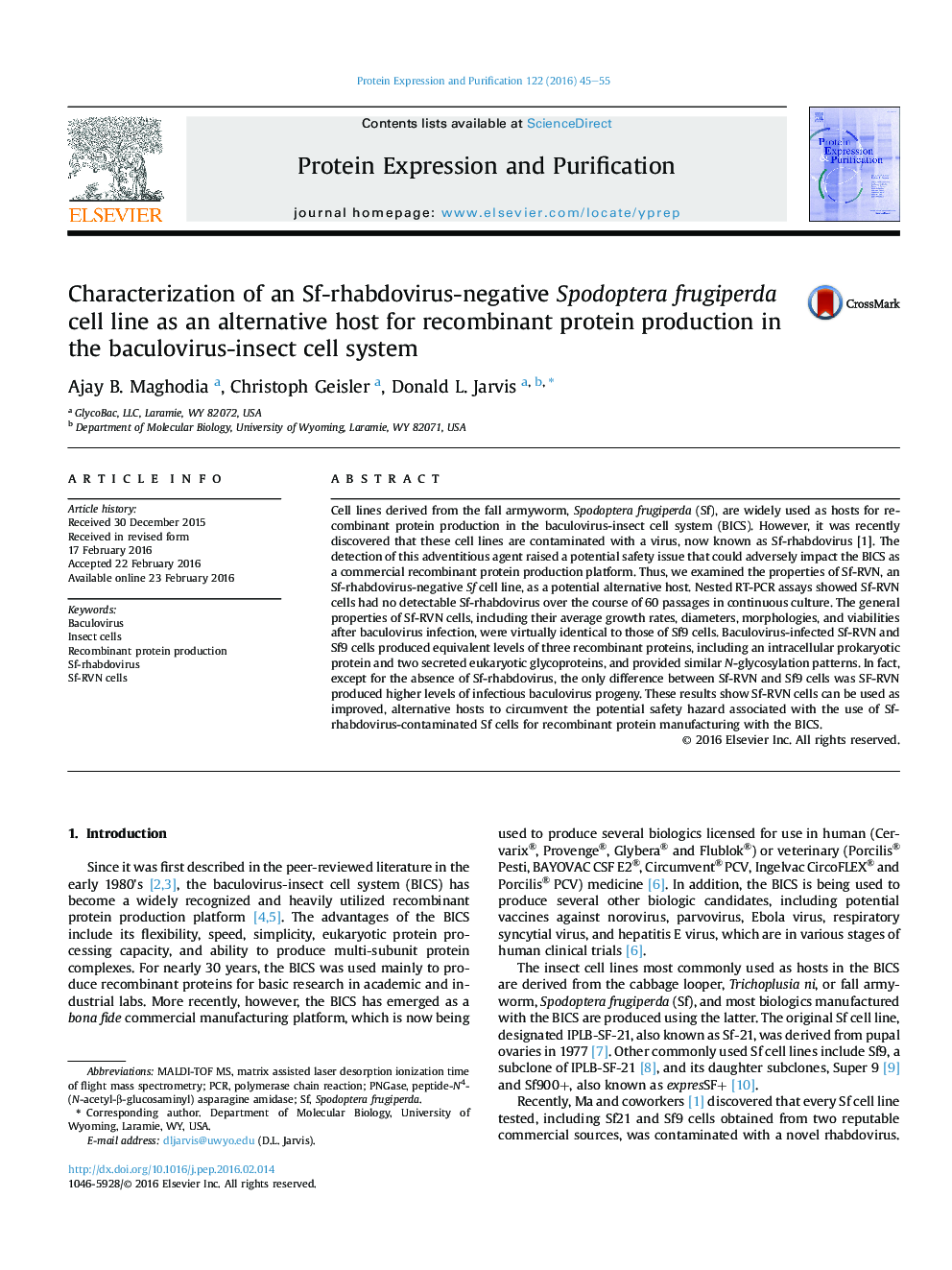| Article ID | Journal | Published Year | Pages | File Type |
|---|---|---|---|---|
| 2020265 | Protein Expression and Purification | 2016 | 11 Pages |
•S. frugiperda (Sf) cells are widely used as hosts in the baculovirus expression system.•All Sf cell lines tested have been found to be contaminated with a novel Rhabdovirus.•This study introduces Sf-RVN, an Sf-rhabdovirus-negative cell line.•The relevant properties of these cells are nearly identical to contaminated Sf9 cells.•Thus, the use of Sf-RVN cells will enhance the biosafety of the baculovirus expression system.
Cell lines derived from the fall armyworm, Spodoptera frugiperda (Sf), are widely used as hosts for recombinant protein production in the baculovirus-insect cell system (BICS). However, it was recently discovered that these cell lines are contaminated with a virus, now known as Sf-rhabdovirus [1]. The detection of this adventitious agent raised a potential safety issue that could adversely impact the BICS as a commercial recombinant protein production platform. Thus, we examined the properties of Sf-RVN, an Sf-rhabdovirus-negative Sf cell line, as a potential alternative host. Nested RT-PCR assays showed Sf-RVN cells had no detectable Sf-rhabdovirus over the course of 60 passages in continuous culture. The general properties of Sf-RVN cells, including their average growth rates, diameters, morphologies, and viabilities after baculovirus infection, were virtually identical to those of Sf9 cells. Baculovirus-infected Sf-RVN and Sf9 cells produced equivalent levels of three recombinant proteins, including an intracellular prokaryotic protein and two secreted eukaryotic glycoproteins, and provided similar N-glycosylation patterns. In fact, except for the absence of Sf-rhabdovirus, the only difference between Sf-RVN and Sf9 cells was SF-RVN produced higher levels of infectious baculovirus progeny. These results show Sf-RVN cells can be used as improved, alternative hosts to circumvent the potential safety hazard associated with the use of Sf-rhabdovirus-contaminated Sf cells for recombinant protein manufacturing with the BICS.
Graphical abstractFigure optionsDownload full-size imageDownload as PowerPoint slide
